Ever wondered how many delicious foods begin with the letter B? From buttery pastries to bold spices and fresh berries, this list dives into 100 mouthwatering foods that showcase the beauty of “B.” You’ll find everything from fruits, vegetables, and grains to dairy favorites, spices, hearty dishes, and refreshing drinks — all starting with the same letter! Whether you’re a food lover, a curious cook, or just someone prepping for a quiz, this guide will take you on a flavorful journey across global cuisines. Get ready to discover new tastes, explore unique ingredients, and maybe even spark your next kitchen creation — all beginning with B!
Foods that start with B
FRUITS
1. Banana
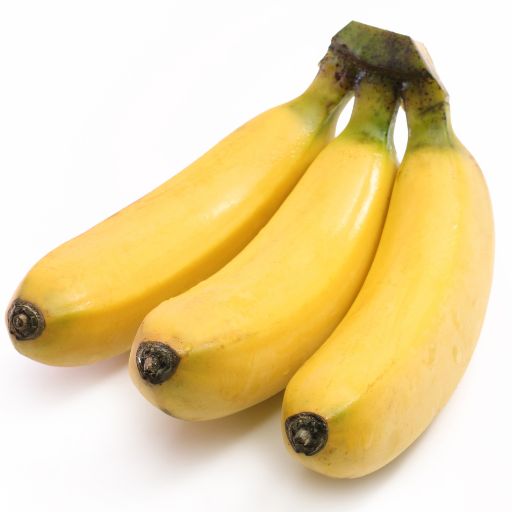
Bananas originated in Southeast Asia and are now grown in tropical regions worldwide, including India, the Philippines, and Central America. They have a naturally sweet, creamy taste that intensifies as they ripen. Bananas are available year-round, though their peak season varies by region. Rich in potassium and fiber, they support heart health and digestion. They’re enjoyed in smoothies, pancakes, banana bread, and as a quick snack. (Musa acuminata)
2. Blueberry
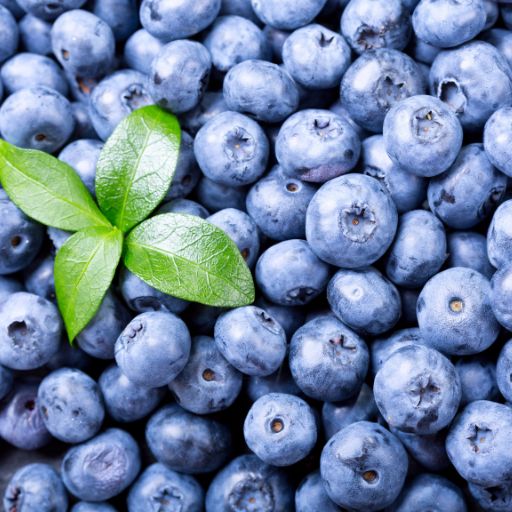
Native to North America, blueberries thrive in cooler climates such as the U.S., Canada, and parts of Europe. They taste sweet with a slight tang and are harvested in summer. Packed with antioxidants and vitamin C, blueberries help improve brain function and heart health. They’re a favorite in muffins, yogurt parfaits, and fresh fruit salads. (Vaccinium corymbosum)
3. Blackberry
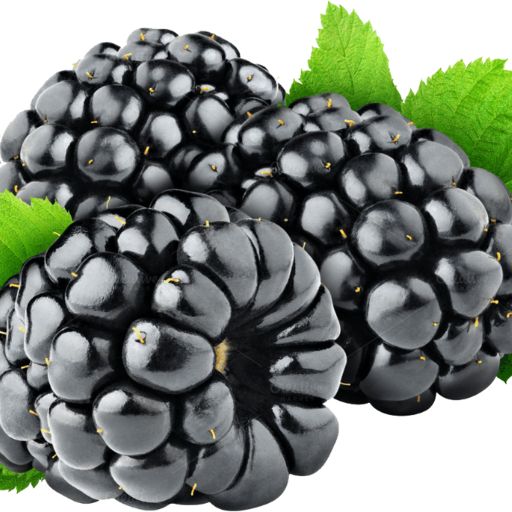
Blackberries grow in temperate zones across North America and Europe. They have a juicy, tart-sweet flavor with earthy undertones and are in season from late summer to early fall. High in vitamin C, fiber, and antioxidants, they promote strong immunity and good digestion. Blackberries shine in jams, cobblers, and smoothie bowls. (Rubus fruticosus)
4. Boysenberry
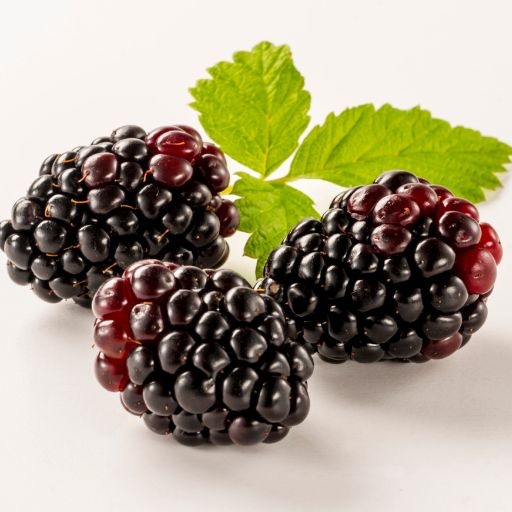
Developed in California, the boysenberry is a cross between raspberry, blackberry, and loganberry. It has a sweet-tart flavor with floral notes and is mainly harvested in late spring through summer. Boysenberries are rich in vitamin K and antioxidants, supporting bone and skin health. They’re often used in pies, preserves, and sauces. (Rubus ursinus × Rubus idaeus)
5. Blood Orange
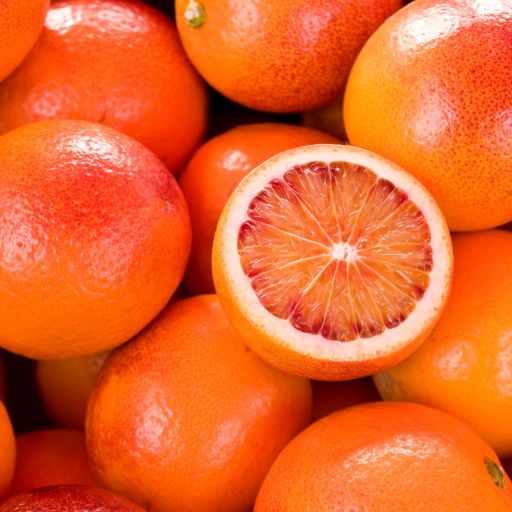
Blood oranges, native to the Mediterranean, are known for their deep red flesh and rich, berry-like citrus flavor. Their season typically runs from December to April. These oranges contain anthocyanins, powerful antioxidants that support cardiovascular health. They’re delicious in salads, desserts, and cocktails. (Citrus × sinensis)
6. Blackcurrant
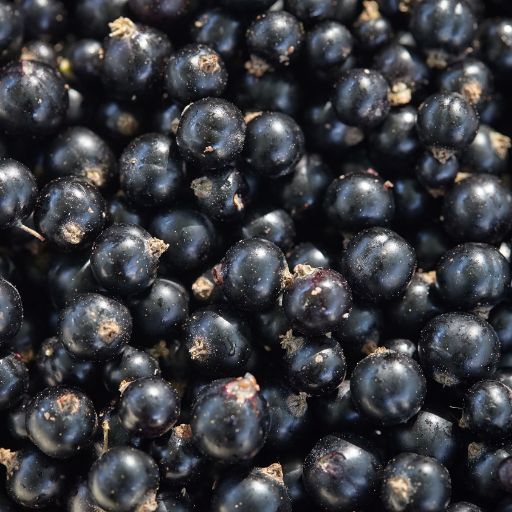
Blackcurrants are native to Europe and northern Asia, offering a tart, earthy flavor with a hint of sweetness. They’re in season during mid to late summer. Packed with vitamin C and antioxidants, they support immunity and eye health. Blackcurrants are used in jams, syrups, cordials, and candies. (Ribes nigrum)
7. Bilberry
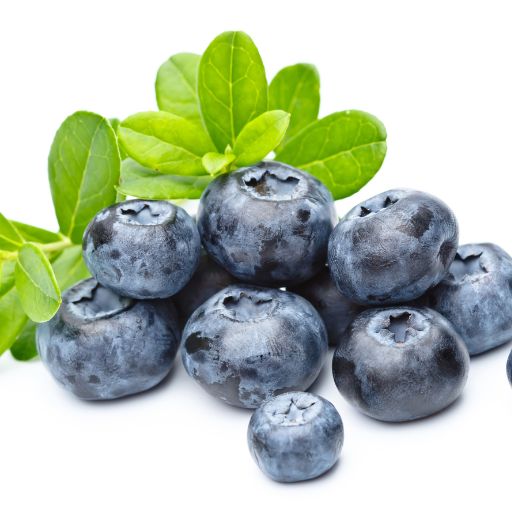
Bilberries grow naturally in Northern Europe and share similarities with blueberries but are smaller and darker. They taste mildly tart and sweet, peaking in mid-summer. Known for their high anthocyanin content, bilberries aid vision and reduce inflammation. They’re used in pies, jams, and traditional herbal remedies. (Vaccinium myrtillus)
8. Barbados Cherry
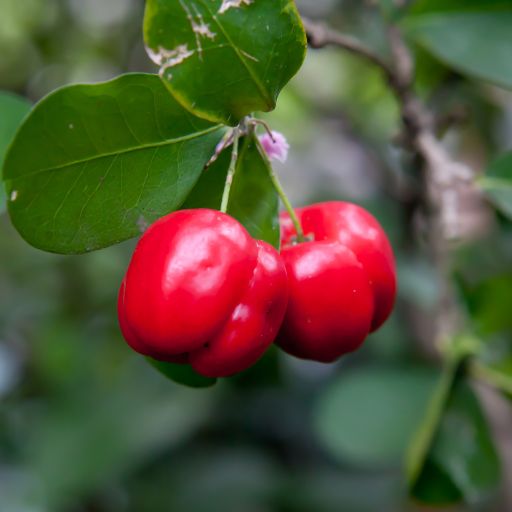
Also called acerola, this cherry-like fruit originates in the Caribbean and tropical Americas. It has a tart, tangy taste with a hint of sweetness and is in season from May to August. Exceptionally high in vitamin C, it boosts immunity and skin health. It’s commonly used in juices, jams, and vitamin supplements. (Malpighia emarginata)
9. Bael Fruit
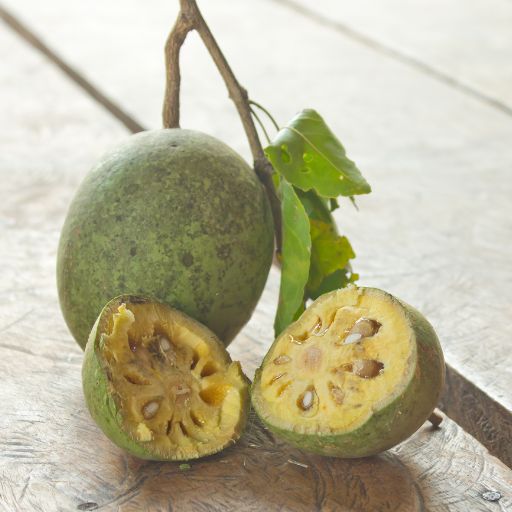
Native to India and Southeast Asia, the bael fruit has a hard shell and aromatic, sweet-tart pulp. It’s in season from April to June. Traditionally valued in Ayurveda, bael aids digestion and helps cool the body during hot weather. The pulp is used in sherbets, jams, and herbal tonics. (Aegle marmelos)
10. Babaco
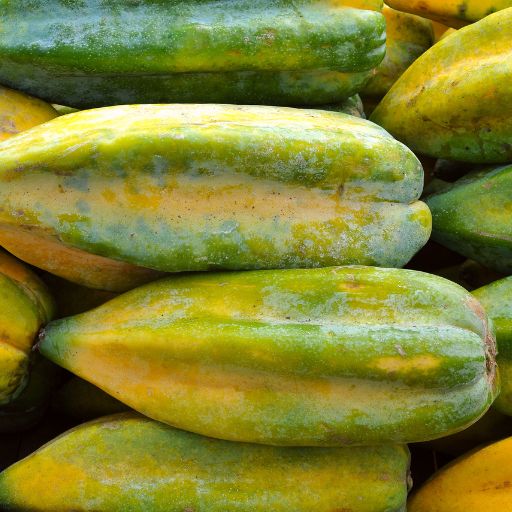
Babaco originates from Ecuador’s Andean valleys and resembles a small, elongated papaya. It has a refreshing, tangy flavor with hints of pineapple and mango and is in season from winter to early spring. Low in calories and rich in vitamin C, it supports immune function and skin health. Babaco is enjoyed fresh, in salads, or made into juice. (Vasconcellea × heilbornii)
11. Breadfruit
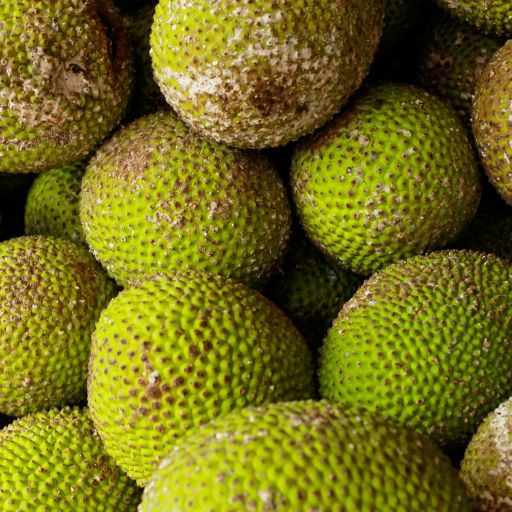
Breadfruit is native to the South Pacific and now grows widely across tropical islands and parts of the Caribbean. Its flavor is mildly sweet with a potato-like texture when cooked. Breadfruit is typically in season from July to November. Rich in fiber and complex carbohydrates, it provides sustained energy and supports digestion. It’s commonly roasted, fried, or made into chips and curries. (Artocarpus altilis)
12. Buriti Fruit
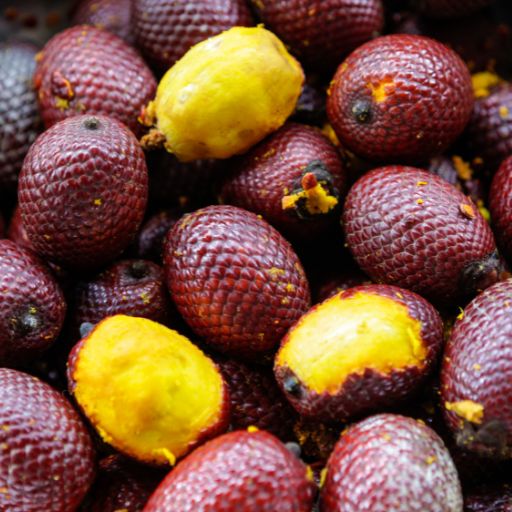
Originating from the Amazon rainforest, the buriti fruit is a reddish-orange palm fruit with a sweet, creamy pulp. It’s available mainly from December to June. Packed with beta-carotene and vitamin E, buriti helps nourish skin and boost immunity. Locals use it to make juices, ice creams, and beauty oils. (Mauritia flexuosa)
13. Buddha’s Hand
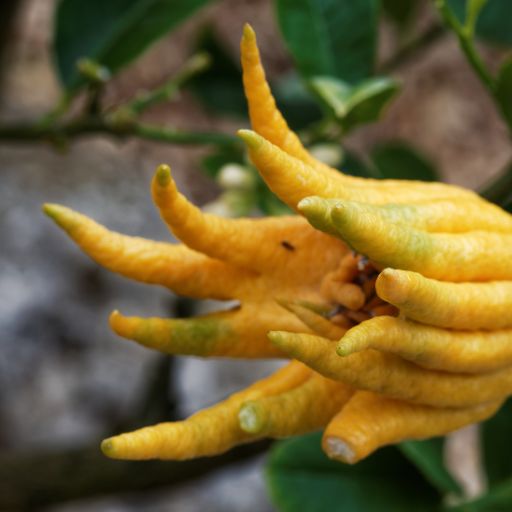
This unusual fruit from India and China has finger-like segments and a strong citrus fragrance. It’s not juicy but offers a sweet lemony zest, mainly harvested from late fall to early winter. Rich in vitamin C and antioxidants, it supports immunity and respiratory health. Buddha’s hand is often candied, infused into spirits, or used to perfume rooms naturally. (Citrus medica var. sarcodactylis)
14. Batuan Plum
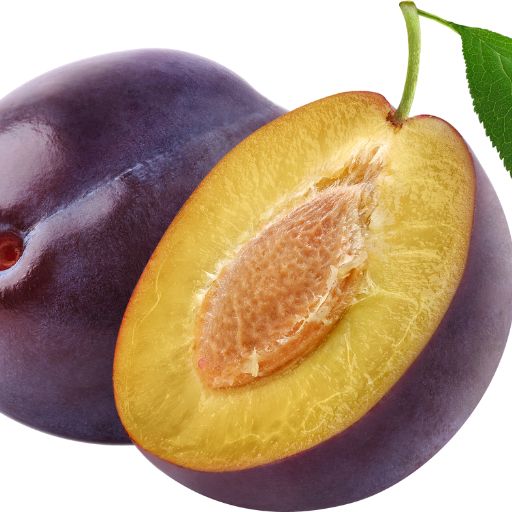
Native to the Philippines, the batuan plum is a small green fruit with a sour, tangy taste similar to tamarind. It’s available from June to September. High in antioxidants and vitamin C, it aids digestion and boosts metabolism. It’s a traditional ingredient in Filipino sour stews like sinigang. (Garcinia binucao)
15. Bacuri
Bacuri grows in Brazil’s Amazon region and has a thick rind enclosing creamy, aromatic pulp. The taste is a mix of sweet and sour with tropical undertones. Its season runs from January to April. Rich in vitamins B and C, bacuri supports skin health and energy production. It’s used in desserts, jams, and ice creams. (Platonia insignis)
16. Brazilian Cherry
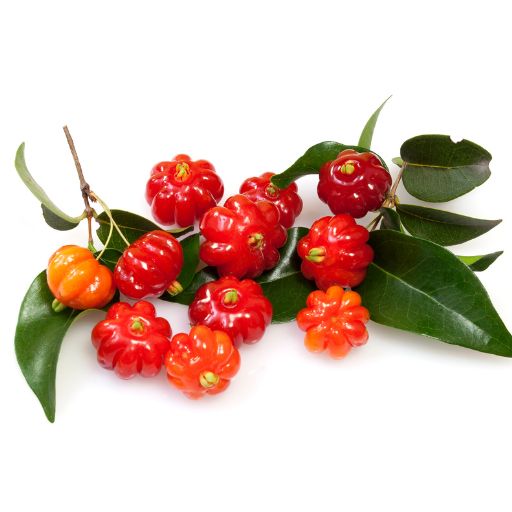
Also called pitanga, this fruit is native to South America and is known for its ribbed, bright-red shape. It has a tart, resinous flavor and ripens mainly in spring. Packed with vitamin A and antioxidants, it benefits the skin and immune system. Brazilian cherry is eaten fresh, juiced, or made into jellies. (Eugenia uniflora)
17. Beach Plum
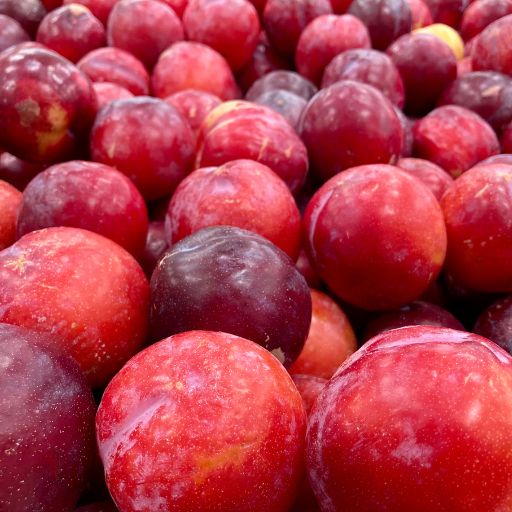
Found along the Atlantic coasts of North America, beach plums are small, dark fruits with a tart, tangy flavor. They ripen in late summer. High in vitamin C and antioxidants, they promote immune health and digestion. The fruit is popular in jams, wines, and baked goods. (Prunus maritima)
18. Bearberry
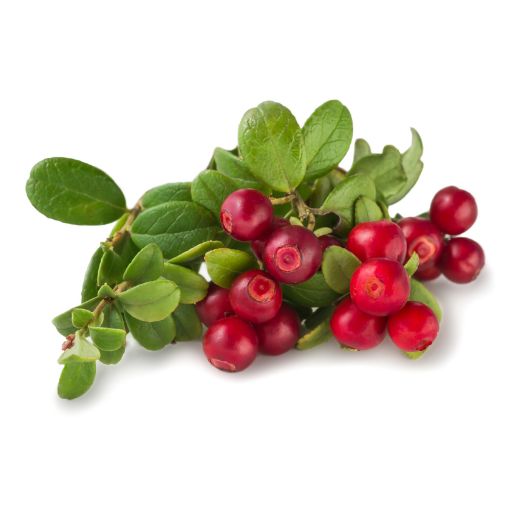
Bearberry grows in cold, northern regions of Europe, Asia, and North America. Its red berries are slightly bitter and mealy in texture, ripening from late summer to early fall. Traditionally used in herbal medicine, bearberries contain antioxidants and compounds that support urinary tract health. They’re sometimes used in teas and preserves. (Arctostaphylos uva-ursi)
19. Bitter Melon (Fruit)
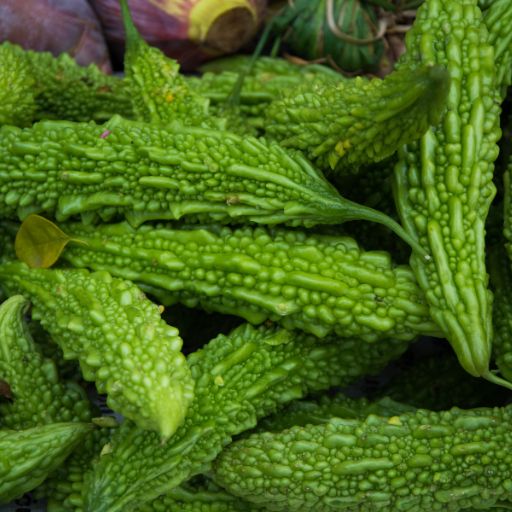
Bitter melon, also known as bitter gourd, is native to tropical Asia and parts of Africa. Its taste is intensely bitter, and it’s in season from May to September. Packed with vitamin C and compounds that help regulate blood sugar, it’s prized for its medicinal benefits. It’s often used in stir-fries, soups, and curries. (Momordica charantia)
20. Bignay
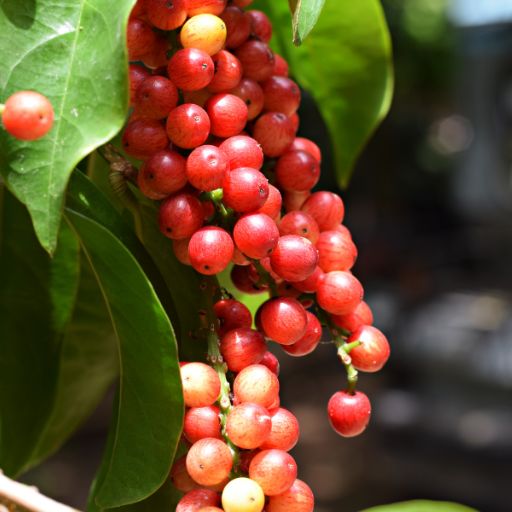
The bignay fruit is native to Southeast Asia and has small, red-purple berries with a tangy, slightly sweet taste. It’s in season from June to August. Rich in antioxidants and polyphenols, it supports heart health and reduces inflammation. Bignay is often used for making wines, jams, and herbal teas. (Antidesma bunius)
VEGETABLES
21. Beetroot
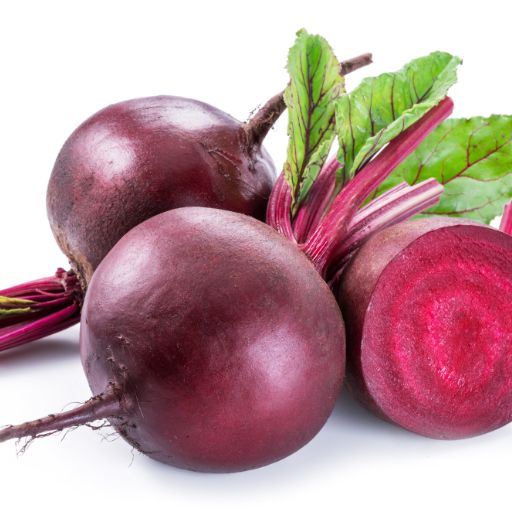
Beetroot, native to the Mediterranean region, has an earthy sweetness and vibrant red color. It’s mainly in season during late fall and winter. Rich in folate, iron, and nitrates, it improves blood flow and supports heart health. Beets are used in salads, soups like borscht, and even natural food dyes. (Beta vulgaris)
22. Broccoli
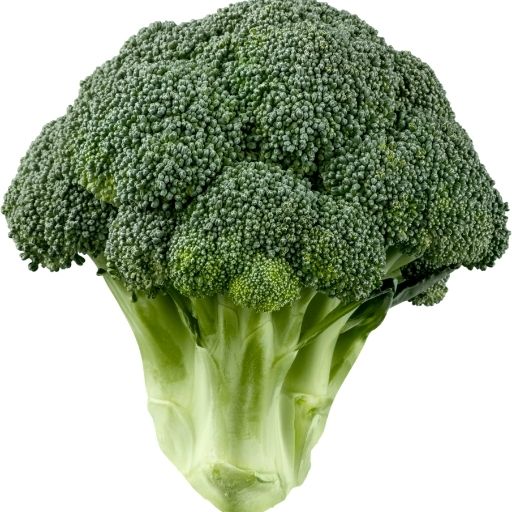
Originating in Italy, broccoli offers a mild, slightly bitter flavor that softens when cooked. It’s typically harvested from fall through spring. Packed with vitamin C, fiber, and antioxidants, it promotes immunity and bone strength. Broccoli is a staple in stir-fries, pasta, and casseroles. (Brassica oleracea var. italica)
23. Brussels Sprouts
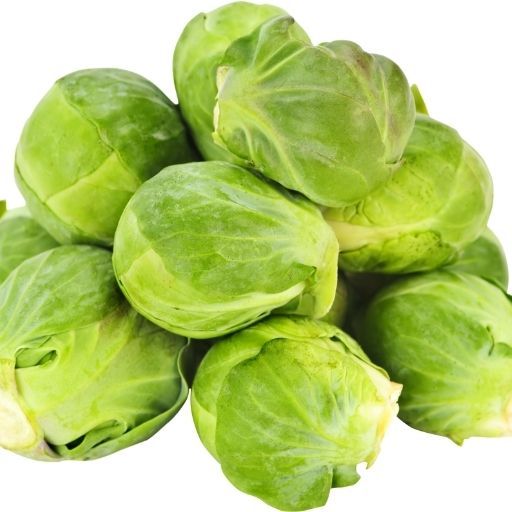
Brussels sprouts were first cultivated in Belgium and have a nutty, slightly bitter taste that becomes sweet when roasted. They’re in season from late fall through winter. High in fiber, vitamin K, and antioxidants, they support digestion and bone health. They’re popular roasted with olive oil or sautéed with bacon. (Brassica oleracea var. gemmifera)
24. Bok Choy
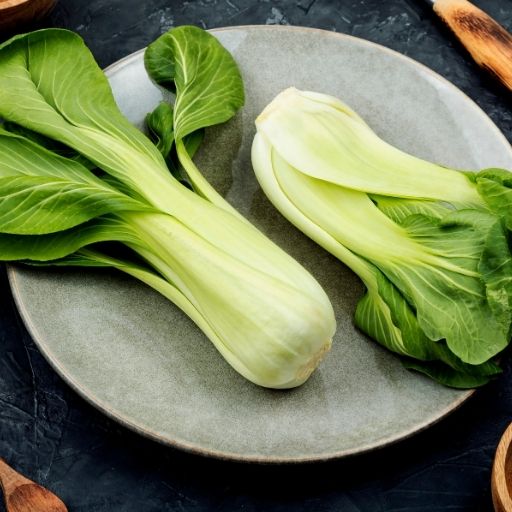
Native to China, bok choy has crisp stalks and tender green leaves with a mild, peppery flavor. It’s available year-round but peaks in cool seasons. Rich in vitamins A, C, and calcium, it supports immunity and bone health. Commonly used in stir-fries, soups, and dumplings. (Brassica rapa subsp. chinensis)
25. Bell Pepper
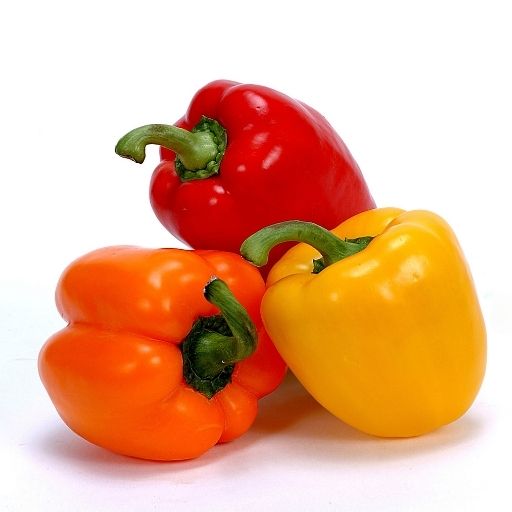
Bell peppers originated in Central and South America and come in green, red, yellow, and orange varieties. They have a crisp texture and sweet, juicy taste. Their season runs from summer through early fall. High in vitamin C and antioxidants, they promote eye and skin health. Used in salads, fajitas, and stuffed pepper dishes. (Capsicum annuum)
26. Butter Lettuce
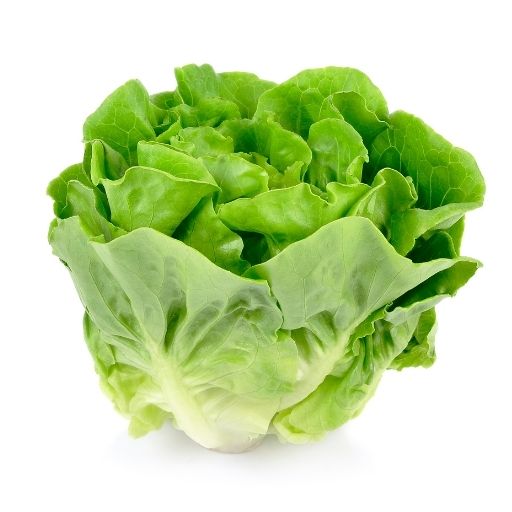
Butter lettuce, native to the Mediterranean, is known for its tender, buttery-textured leaves and mild flavor. It grows best in spring and early summer. Low in calories and rich in vitamin A and potassium, it supports hydration and eye health. Commonly used in sandwiches, wraps, and light salads. (Lactuca sativa var. capitata)
27. Bamboo Shoots
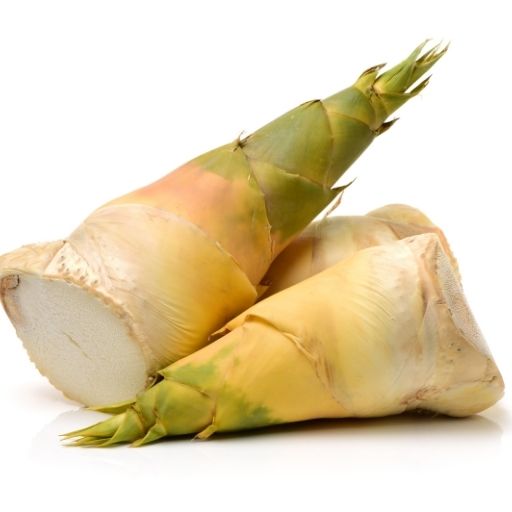
Bamboo shoots come from Asia and are the young sprouts of the bamboo plant. They have a crunchy texture and mild, earthy taste. Harvested mainly in spring, they’re low in fat and rich in fiber, promoting healthy digestion. Used widely in Asian stir-fries, soups, and curries. (Bambusa vulgaris)
28. Bean Sprouts
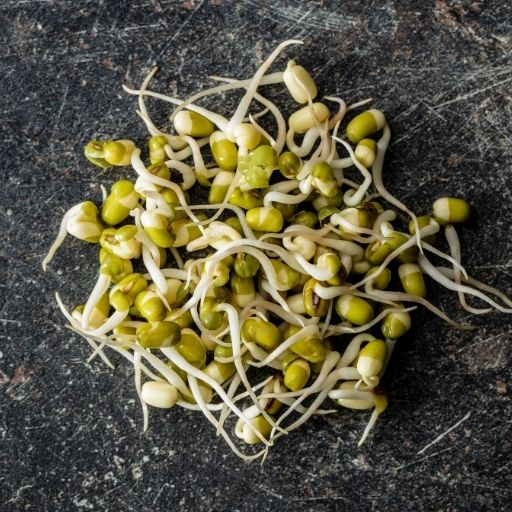
Bean sprouts, popular in Asian cuisine, are typically grown from mung beans. They have a crisp texture and a subtle nutty flavor. Available year-round, they’re rich in vitamin C and folate, supporting immunity and cell growth. They’re used in salads, noodle dishes, and stir-fries. (Vigna radiata)
29. Broad Beans
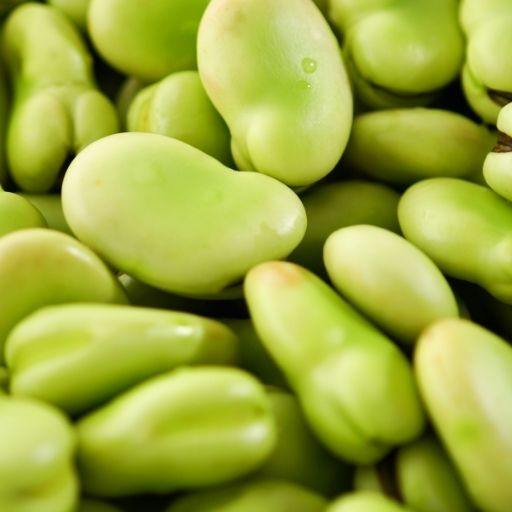
Also known as fava beans, broad beans originated in the Mediterranean. They have a mild, nutty flavor and are in season from spring to early summer. Packed with plant protein, fiber, and iron, they aid muscle health and digestion. Enjoyed in stews, dips, and salads like ful medames. (Vicia faba)
30. Butternut Squash
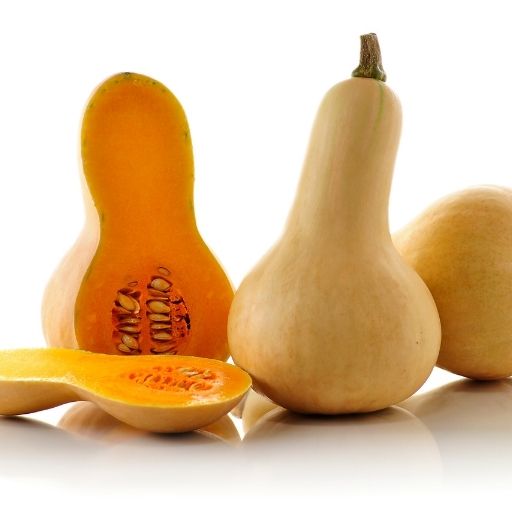
Native to the Americas, butternut squash has a sweet, nutty flavor similar to pumpkin. It’s harvested in fall and winter. Rich in beta-carotene and vitamin C, it promotes eye health and boosts immunity. Commonly roasted, mashed, or made into creamy soups. (Cucurbita moschata)
31. Burdock Root

Burdock root is native to Europe and Asia and has a mild, earthy taste with a hint of sweetness. It’s typically in season in late fall. Rich in antioxidants and inulin fiber, it supports liver and gut health. Used in Japanese dishes like kinpira gobo and herbal teas. (Arctium lappa)
32. Black Radish
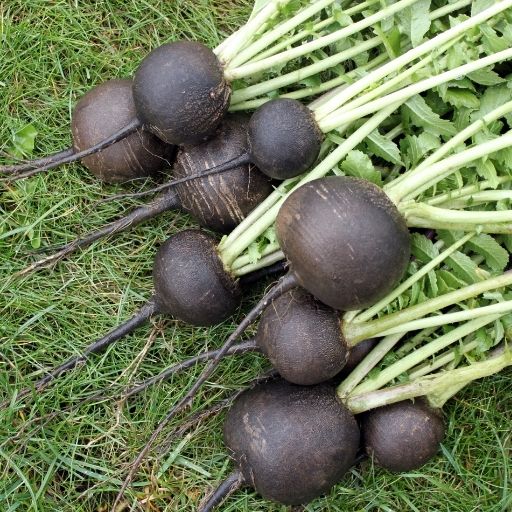
Black radish originated in the Eastern Mediterranean and has a sharp, peppery flavor stronger than red radish. It’s in season during fall and winter. High in vitamin C and sulfur compounds, it supports detoxification and immunity. Often eaten raw, pickled, or roasted. (Raphanus sativus var. niger)
33. Boston Lettuce
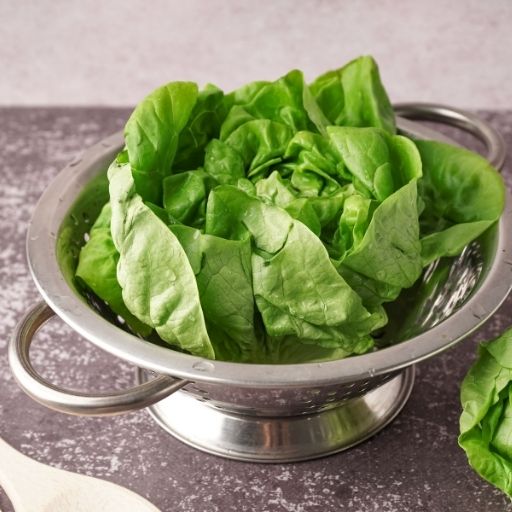
Boston lettuce, a type of butterhead, was developed in the U.S. and has tender, pale-green leaves with a mild, sweet flavor. Grown best in cool weather, it’s available spring through early fall. Low in calories and rich in vitamin K, it supports healthy bones. Perfect for wraps, salads, and sandwiches. (Lactuca sativa var. capitata)
34. Baby Corn
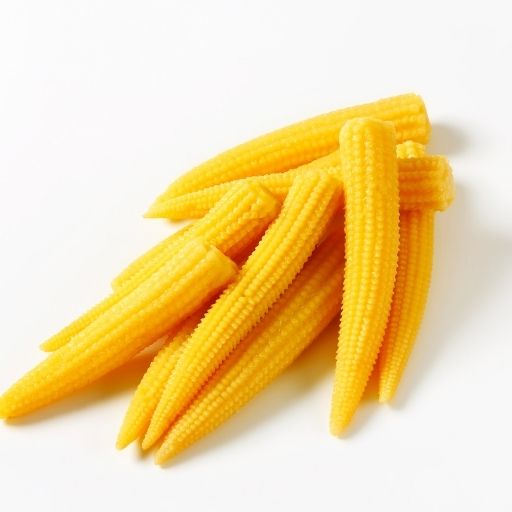
Baby corn is harvested early from the maize plant before maturity, mainly in Thailand and China. It’s mildly sweet and crunchy. Available year-round, it’s low in calories and rich in fiber. Popular in Asian stir-fries, curries, and soups. (Zea mays)
35. Belgian Endive
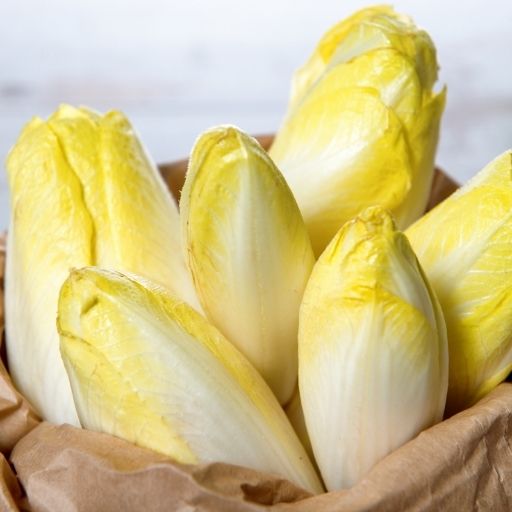
Belgian endive originated in Belgium and has crisp, pale leaves with a pleasantly bitter flavor. It’s a winter vegetable, typically harvested from late fall to early spring. Packed with fiber and folate, it aids digestion and heart health. Served raw in salads or braised as a side dish. (Cichorium intybus var. foliosum)
36. Bush Tomato
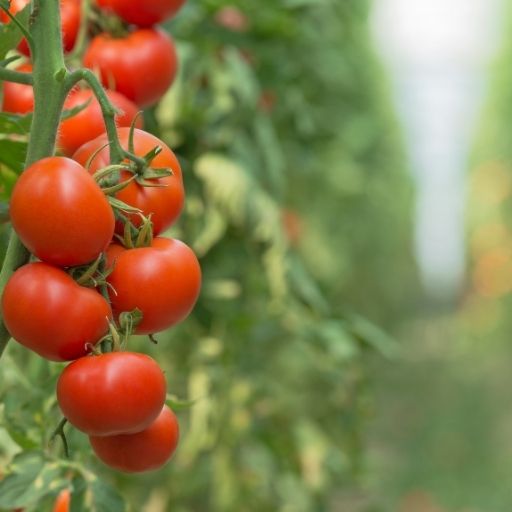
Also called desert raisin, the bush tomato is native to Australia’s arid regions. It has a tangy, slightly smoky flavor and is in season from late summer. Rich in antioxidants and minerals, it promotes energy and immune balance. Used in chutneys, sauces, and native spice blends. (Solanum centrale)
37. Bitter Gourd
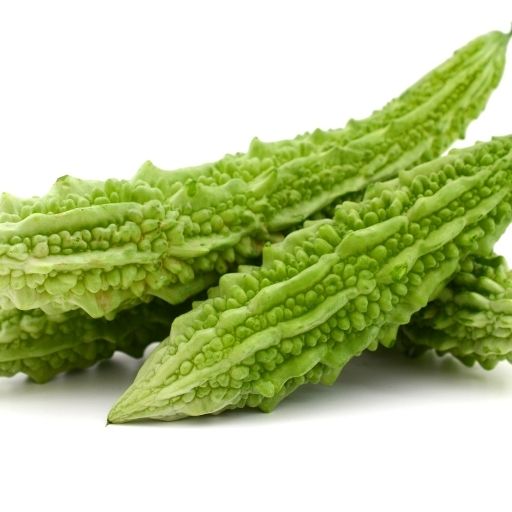
Bitter gourd, or karela, is native to tropical Asia and Africa. It has a distinct bitter flavor and is in season during summer. High in vitamin C and compounds that regulate blood sugar, it’s valued in traditional medicine. Often stir-fried, stuffed, or added to curries. (Momordica charantia)
38. Brown Onion
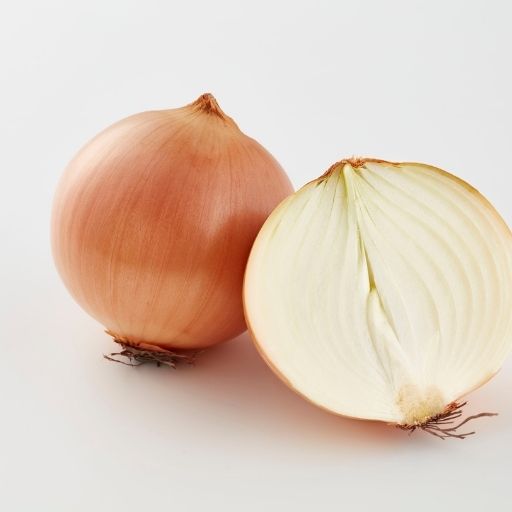
Brown onions are cultivated globally and have a strong, pungent flavor that turns sweet when cooked. They’re harvested mainly in late summer to fall. Rich in antioxidants and sulfur, they support heart health and immunity. A staple in soups, stews, and sauces. (Allium cepa)
39. Beet Greens
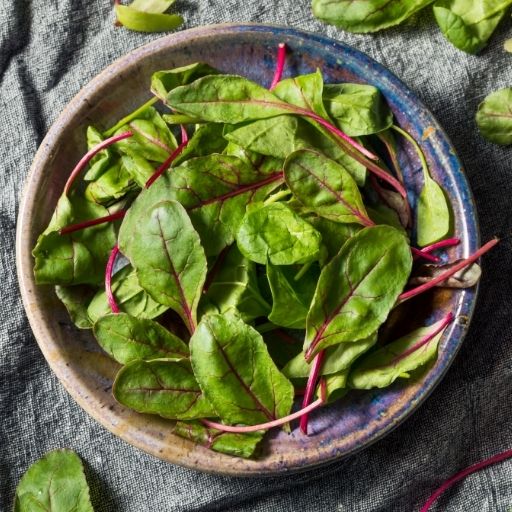
Beet greens are the leafy tops of the beetroot plant, native to the Mediterranean. They have a mild, earthy flavor similar to spinach. In season from spring to early summer, they’re rich in iron, calcium, and vitamin K. Often sautéed or added to soups and omelets. (Beta vulgaris)
40. Bottle Gourd
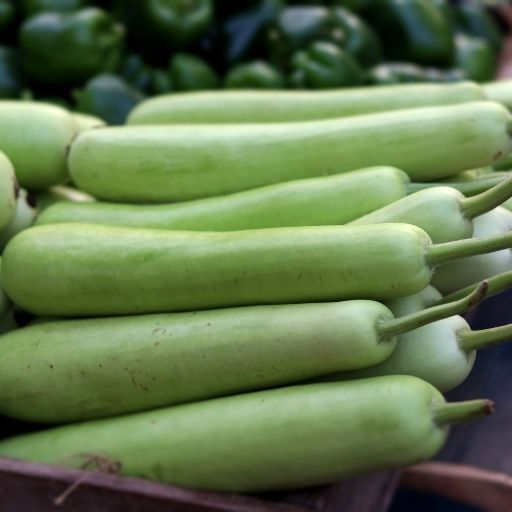
Bottle gourd, or calabash, originated in Africa but is now grown across Asia and tropical regions. It has a mild, slightly sweet taste and is in season during summer. Low in calories and rich in water content, it supports hydration and digestion. Commonly used in stews, curries, and desserts. (Lagenaria siceraria)
SPICES & HERBS
41. Basil
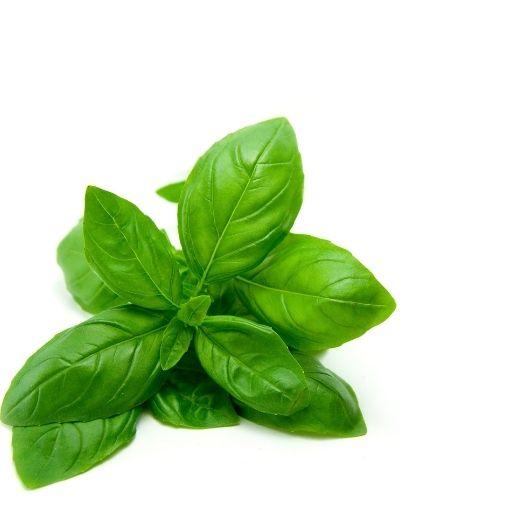
Basil, originally from India and Southeast Asia, is one of the world’s most beloved herbs. It has a sweet, peppery aroma with hints of mint and clove. It thrives in warm months, especially summer. Packed with antioxidants and anti-inflammatory compounds, basil supports immunity and heart health. It’s a key ingredient in pesto, pasta sauces, and Thai curries. (Ocimum basilicum)
42. Bay Leaf
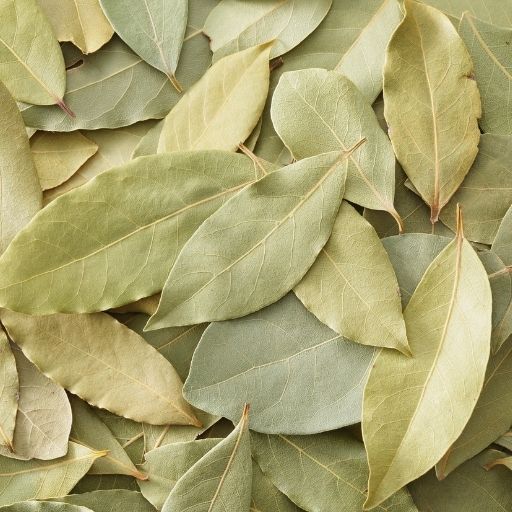
Bay leaves come from the Mediterranean bay laurel tree and have a subtle herbal aroma with slightly floral, bitter notes. They’re harvested year-round in warm regions. Known for aiding digestion and reducing inflammation, they’re a staple in soups, stews, and sauces. Bay leaves infuse depth into slow-cooked dishes and stocks. (Laurus nobilis)
43. Black Pepper
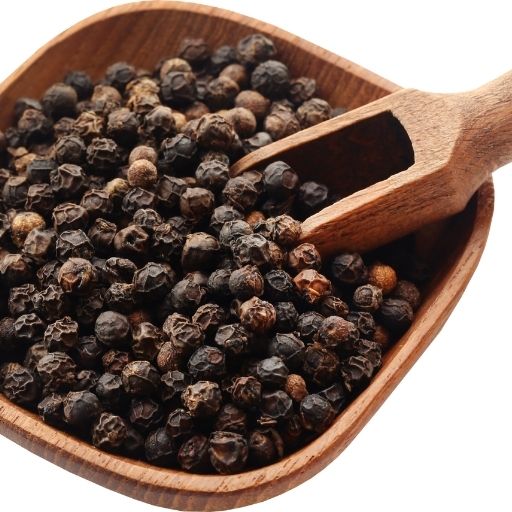
Native to India’s Malabar Coast, black pepper is known as the “King of Spices.” It has a sharp, pungent flavor with earthy warmth. Pepper is harvested in tropical regions year-round. Rich in piperine, it boosts metabolism and enhances nutrient absorption. It’s a universal seasoning, found in everything from meats to soups. (Piper nigrum)
44. Brown Mustard Seed
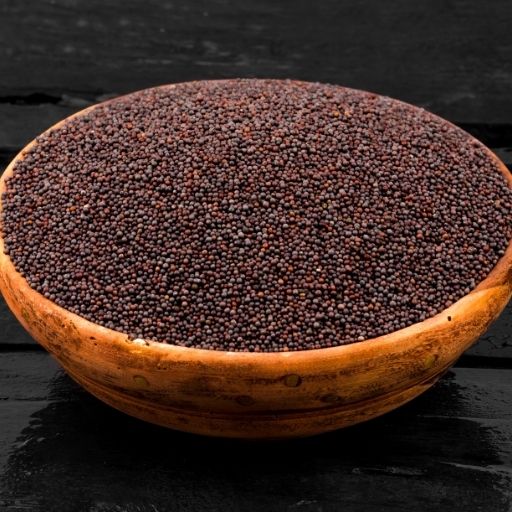
Brown mustard seeds originated in Asia and have a spicy, nutty flavor that intensifies when crushed. They’re harvested in late summer to early fall. Full of selenium and omega-3 fatty acids, they support metabolism and heart health. Used in pickles, curries, and Dijon mustard production. (Brassica juncea)
45. Bird’s Eye Chili
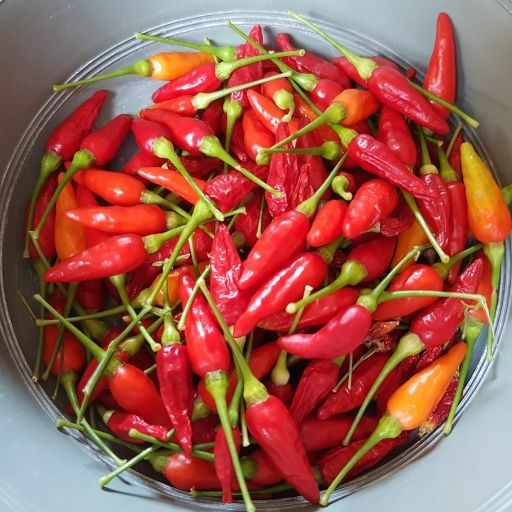
This fiery chili pepper hails from Southeast Asia and packs intense heat with a fruity undertone. It’s in season during the warmer months. High in capsaicin, it promotes metabolism and releases endorphins. Bird’s eye chili is common in Thai, Filipino, and African dishes, adding spice to curries and sauces. (Capsicum frutescens)
46. Barberry
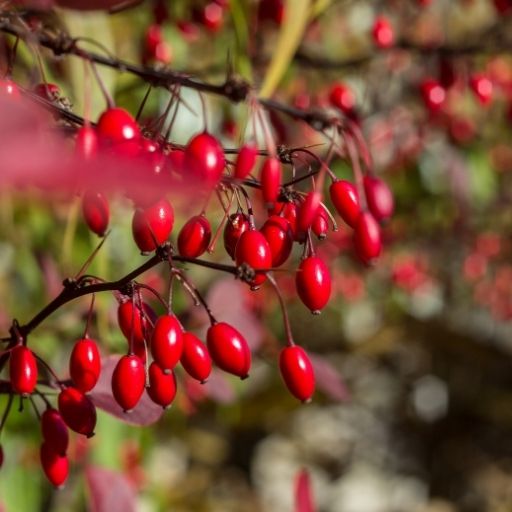
Barberries grow across Europe and Asia, especially Iran, where they’re prized for their tart, lemony flavor. They’re harvested in late summer to fall. Loaded with vitamin C and berberine, they help regulate blood sugar and support immunity. Barberries add brightness to Persian rice dishes and herbal teas. (Berberis vulgaris)
47. Blue Fenugreek
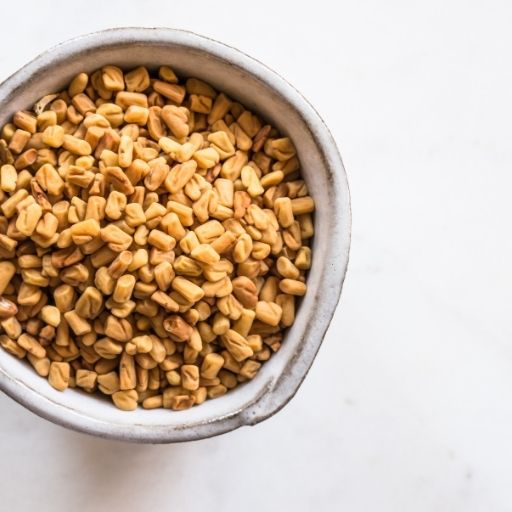
Native to the Caucasus and parts of Eastern Europe, blue fenugreek has a nutty, slightly bitter taste with hints of hay. It’s harvested in summer and dried for later use. Rich in iron and fiber, it aids digestion and boosts energy. Commonly used in Georgian spice blends like khmeli suneli and in breads. (Trigonella caerulea)
48. Betel Leaf

Betel leaf, native to South and Southeast Asia, has a spicy, refreshing aroma with a peppery bite. It’s harvested year-round in tropical regions. Traditionally used as a mouth freshener and digestive aid, it contains antioxidants and antibacterial compounds. Betel leaves are used in wraps, snacks, and herbal preparations. (Piper betle)
49. Black Cumin
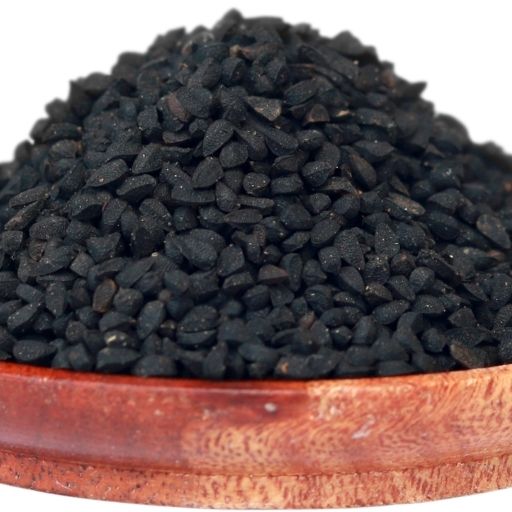
Black cumin, or nigella, is native to Western Asia and the Mediterranean. It has a warm, slightly bitter flavor with onion and oregano notes. Harvested in late summer, it’s rich in thymoquinone, which supports immunity and digestion. Common in Middle Eastern breads, curries, and pickles. (Nigella sativa)
50. Bush Basil

Bush basil, native to Australia, has a strong, spicy aroma with a hint of citrus. It thrives in warm climates and is harvested throughout the year. Known for antimicrobial properties, it supports respiratory health. Often used in marinades, sauces, and native spice rubs. (Ocimum tenuiflorum var. australe)
GRAINS, LEGUMES & SEEDS
51. Barley
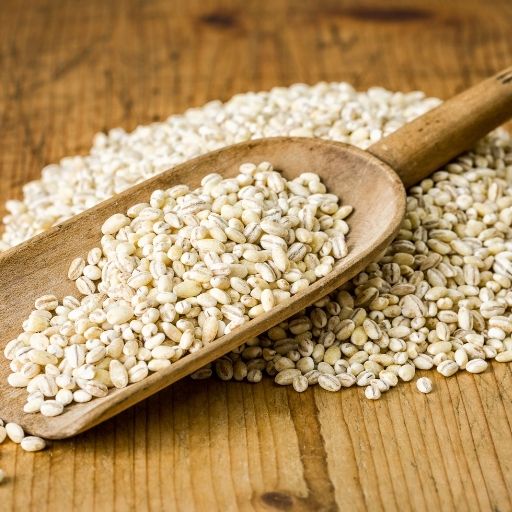
Barley is one of the oldest cultivated grains, originating from the Fertile Crescent in the Middle East. It has a mild, nutty flavor with a chewy texture. Harvested mainly in spring and fall, barley is rich in fiber and beta-glucan, which support heart health and digestion. It’s often used in soups, stews, and as a base for malt and beer. (Hordeum vulgare)
52. Buckwheat
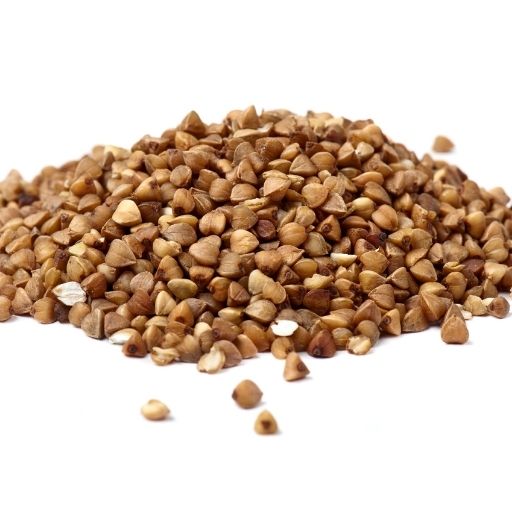
Despite its name, buckwheat is a gluten-free seed native to Central and East Asia. It has an earthy, slightly bitter flavor and is harvested in late summer. High in protein and antioxidants, it helps manage blood sugar and promotes heart health. Used in soba noodles, pancakes, and porridge. (Fagopyrum esculentum)
53. Black Beans
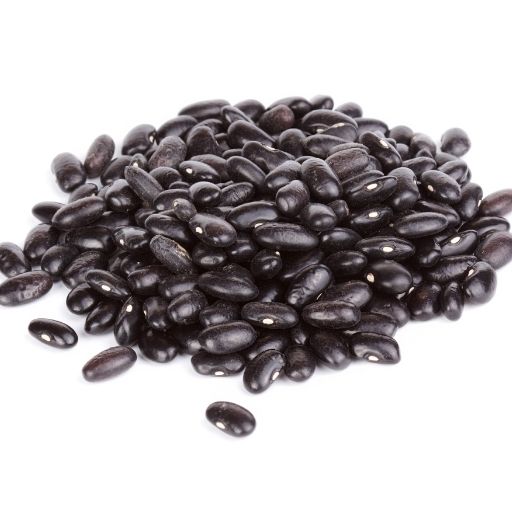
Black beans originated in Central and South America and are known for their mild, meaty flavor. Typically harvested in late summer, they’re high in protein, fiber, and iron, supporting muscle and digestive health. They’re a staple in Latin American dishes like burritos, soups, and rice bowls. (Phaseolus vulgaris)
54. Broad Bean

Also known as fava bean, the broad bean has Mediterranean origins and a buttery, nutty taste. It’s in season during spring and early summer. Packed with protein, folate, and fiber, it supports energy and heart health. Commonly used in Mediterranean and Middle Eastern dishes like falafel and stews. (Vicia faba)
55. Butter Bean
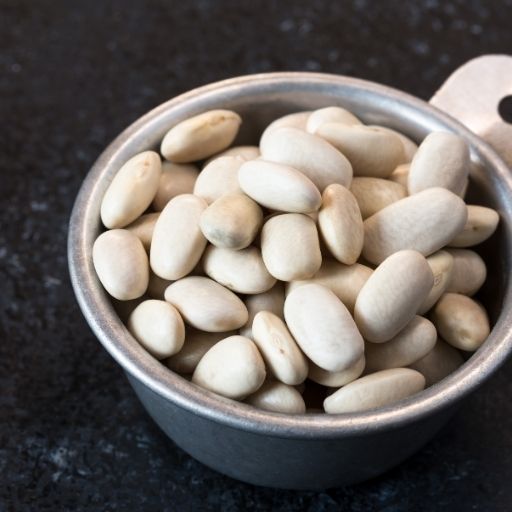
Butter beans, also called lima beans, originated in South America and have a creamy, mild flavor. They’re harvested in late summer and early fall. High in protein and potassium, they support muscle function and heart health. Often featured in casseroles, succotash, and soups. (Phaseolus lunatus)
56. Brown Rice
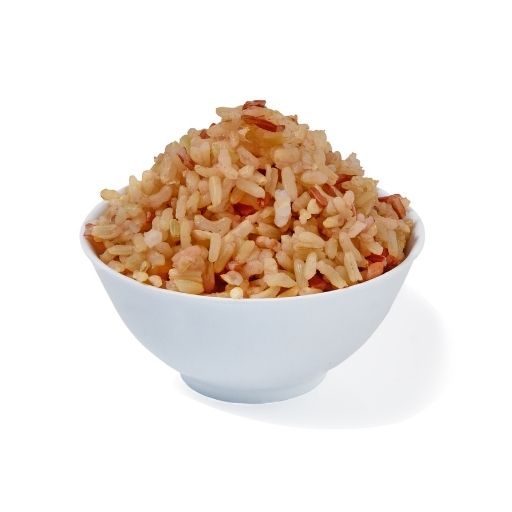
Brown rice, first cultivated in Asia, is whole-grain rice with a nutty flavor and chewy texture. Harvested mainly in autumn, it’s rich in manganese, magnesium, and fiber, which aid metabolism and digestion. It’s a healthy base for curries, rice bowls, and stir-fries. (Oryza sativa)
57. Black Lentils
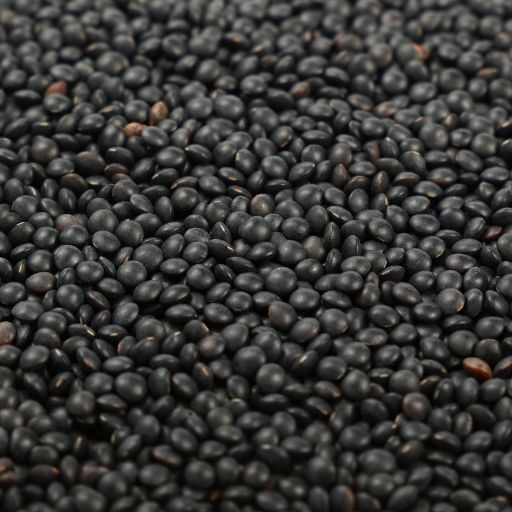
Black lentils, or beluga lentils, originate from the Mediterranean region. They have an earthy flavor and firm texture that holds up well in cooking. In season during late summer and fall, they’re high in protein and folate, supporting muscle growth and red blood cell production. Ideal for salads, soups, and grain bowls. (Lens culinaris)
58. Bengal Gram
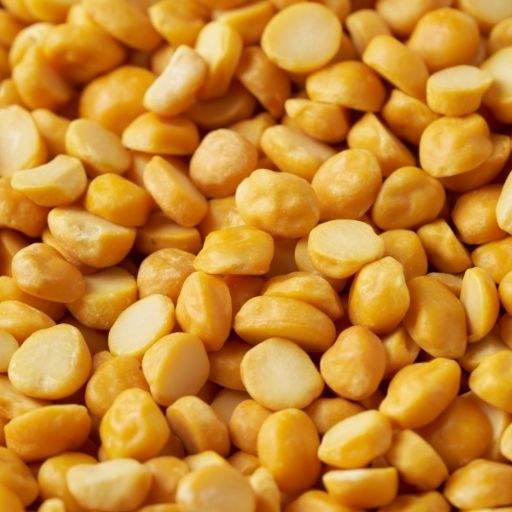
Bengal gram, or chickpea, is native to India and has a nutty, slightly earthy flavor. It’s harvested in spring and is rich in protein, fiber, and iron. It aids digestion and promotes energy levels. Commonly ground into gram flour or cooked in curries and snacks like chana masala. (Cicer arietinum)
59. Bambara Groundnut
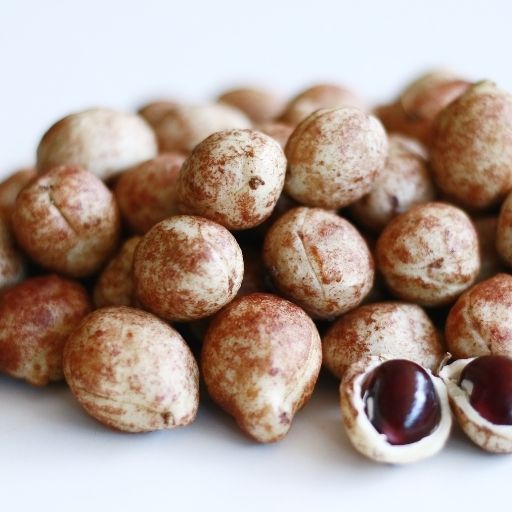
This drought-resistant legume hails from Africa and has a sweet, nutty taste. Harvested mainly in late summer, it’s packed with protein and minerals, making it excellent for energy and growth. Used in porridges, soups, and roasted snacks. (Vigna subterranea)
60. Bulgur
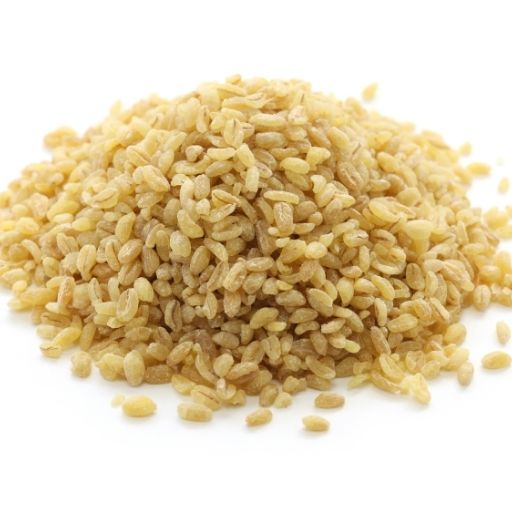
Bulgur is an ancient Middle Eastern grain made from cracked, parboiled wheat. It has a light, nutty flavor and fluffy texture. Available year-round, it’s rich in fiber and iron, promoting digestion and heart health. Often featured in tabbouleh, pilaf, and grain salads. (Triticum durum)
DAIRY & CHEESES
61. Butter

Butter has been made for thousands of years, with origins tracing back to ancient Mesopotamia and India. It offers a rich, creamy flavor that enhances both sweet and savory dishes. Available year-round, butter is a source of fat-soluble vitamins like A, D, and E. It’s used for baking, sautéing, and spreading on bread. (Dairy product from Bos taurus milk)
62. Buttermilk
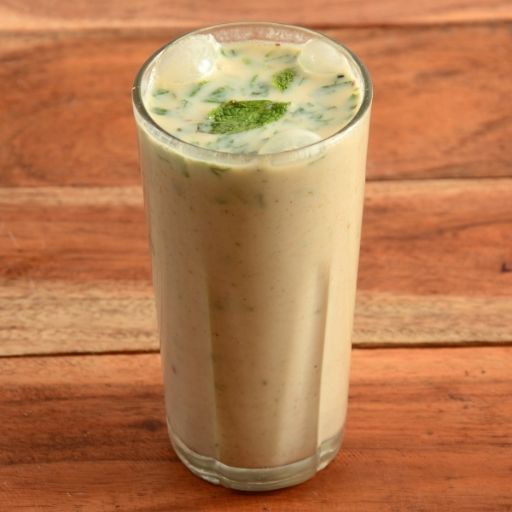
Originally a byproduct of butter churning, buttermilk has a tangy flavor and smooth texture. It’s produced worldwide, especially in Europe and South Asia. Consumed throughout the year, it’s rich in probiotics that aid digestion and support gut health. Commonly used in pancakes, biscuits, and marinades. (Fermented dairy product from Bos taurus milk)
63. Brie Cheese

Brie cheese comes from the Île-de-France region in France and is famous for its soft, creamy texture and mild, buttery flavor. It’s made year-round, but best enjoyed in cooler months. High in calcium and protein, it supports bone health. Brie is often served with bread, fruits, or baked until gooey. (Bos taurus milk product, soft-ripened)
64. Blue Cheese

Originating in France and Italy, blue cheese is known for its sharp, tangy flavor and distinctive blue veins. Made year-round, it’s rich in calcium and beneficial bacteria that support gut health. Crumbled on salads, melted in sauces, or served with pears and honey, it adds bold flavor. (Bos taurus milk product with Penicillium roqueforti)
65. Burrata
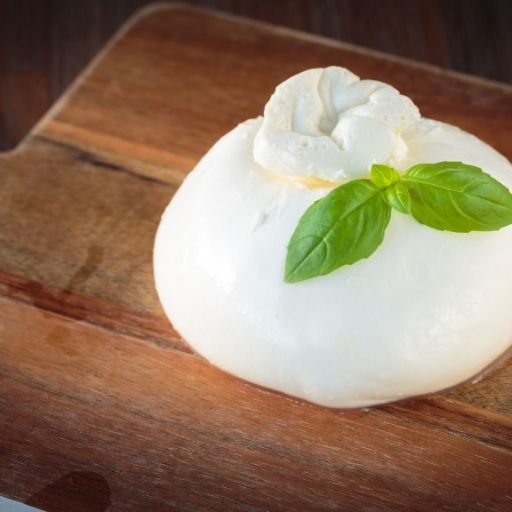
Burrata, an Italian cheese from Puglia, has a delicate outer shell of mozzarella filled with creamy stracciatella. It tastes buttery and fresh, best enjoyed in summer when milk is sweetest. Packed with protein and calcium, it nourishes bones and muscles. Perfect with tomatoes, basil, and olive oil. (Bos taurus milk cheese)
66. Bocconcini
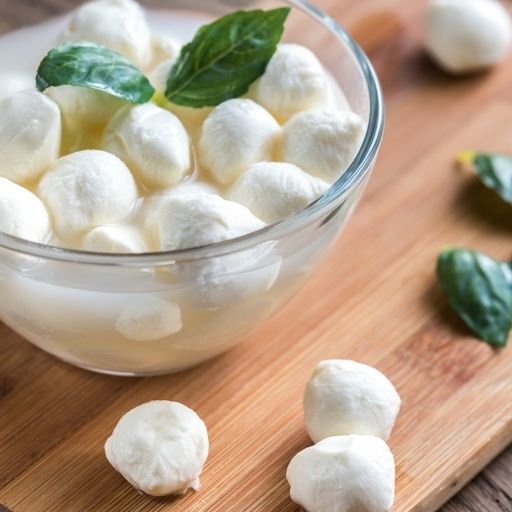
Bocconcini are small mozzarella balls from Italy, known for their soft texture and delicate, milky flavor. Produced all year, they’re rich in calcium and protein. These bite-sized cheeses are often added to salads, pizzas, and appetizers for a light, fresh touch. (Bos taurus milk cheese)
67. Brick Cheese

Brick cheese was developed in Wisconsin, USA, in the 1870s. It has a mild, buttery flavor when young and becomes tangier as it ages. Made year-round, it’s a good source of calcium and vitamin B12. Often used in grilled cheese sandwiches and casseroles. (Bos taurus milk cheese)
68. Butterfat

Butterfat, the natural fat component in milk, is essential in making butter, cream, and ice cream. Found worldwide, it adds a smooth, rich taste to dairy products. Available year-round, it’s a dense energy source and supports vitamin absorption. Common in desserts, sauces, and baked goods. (Milk lipid from Bos taurus)
69. Buttercream

Buttercream originated in Europe and combines butter and sugar to create a smooth, sweet frosting. It’s made anytime but often during festive baking seasons. Though indulgent, it provides quick energy and a luscious texture for cakes, cupcakes, and pastries. (Confection derived from Bos taurus butter)
70. Boursin Cheese
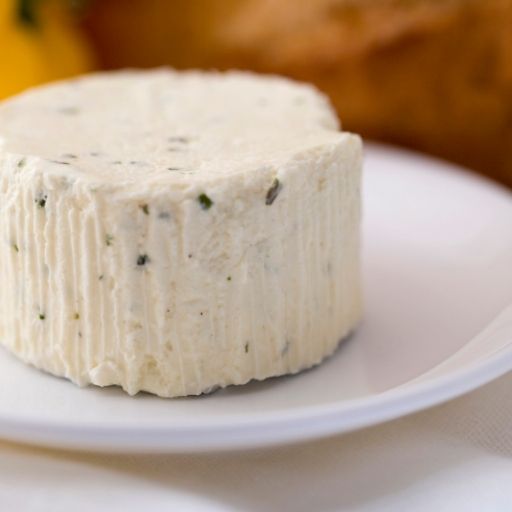
Boursin cheese, created in Normandy, France, is a soft, spreadable cheese flavored with herbs and garlic. It has a creamy, tangy taste and is available year-round. High in calcium and protein, it supports bone health while adding flavor to appetizers, dips, and spreads. (Bos taurus milk cheese)
BREADS, PASTA & GRAIN-BASED FOODS
71. Bagel

Bagels originated in Poland’s Jewish communities in the 1600s and are known for their dense, chewy texture and golden crust. They have a mildly sweet, yeasty flavor and are enjoyed year-round. Made from wheat flour, they provide carbohydrates for energy. Bagels are often toasted and topped with cream cheese, smoked salmon, or butter. (Triticum aestivum product)
72. Brioche

Brioche comes from France and is a soft, buttery bread enriched with eggs and milk. It has a lightly sweet flavor and rich aroma, baked year-round but especially popular during holidays. High in carbs and moderate in protein, it provides quick energy. Commonly used for French toast, burgers, or as dessert bread. (Triticum aestivum product)
73. Baguette
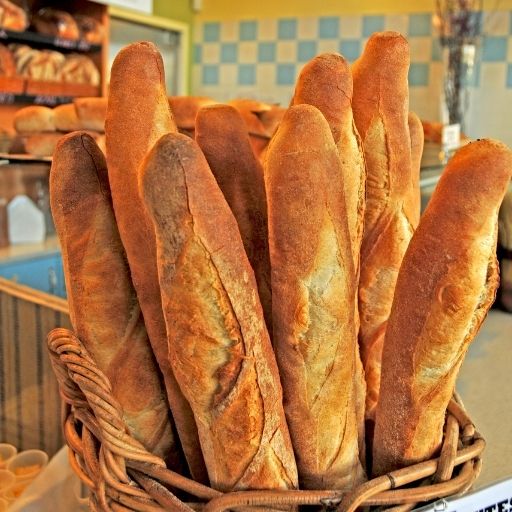
The baguette, France’s signature bread, features a crisp crust and airy interior with a mildly nutty flavor. Baked daily across the country, it’s best enjoyed fresh. Rich in carbohydrates and low in fat, it provides energy and satiety. Perfect with cheese, soups, or simply buttered. (Triticum aestivum product)
74. Breadstick
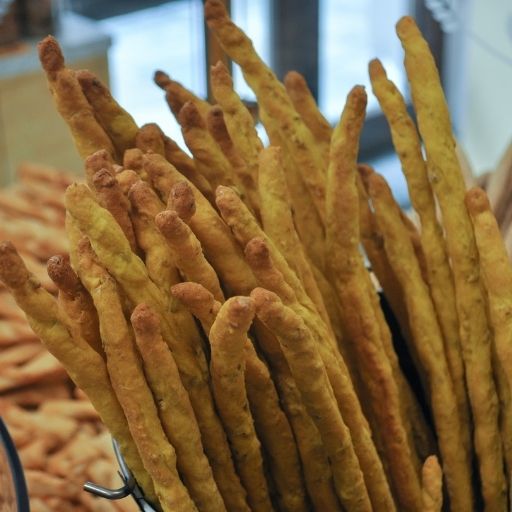
Breadsticks were first made in Italy’s Piedmont region and are long, thin, and crispy. They have a delicate flavor with a hint of olive oil or herbs. Typically baked year-round, they’re low in fat and make a light snack or appetizer. Served alongside soups, dips, and salads. (Triticum aestivum product)
75. Biscuit

Biscuits in American cuisine are fluffy, buttery quick breads that originated in the southern United States. They have a rich, savory flavor with a soft crumb. Often made fresh in fall and winter breakfasts, they’re a source of carbohydrates and calcium. Commonly paired with gravy, honey, or jam. (Triticum aestivum product)
76. Bannock

Bannock traces its roots to Scottish and Indigenous North American traditions. It’s a flat, round bread with a hearty, slightly dense texture and mild flavor. Often cooked on a griddle year-round, it provides energy and fiber. Eaten with stews or as a base for sandwiches. (Triticum aestivum or Hordeum vulgare product)
77. Barley Bread
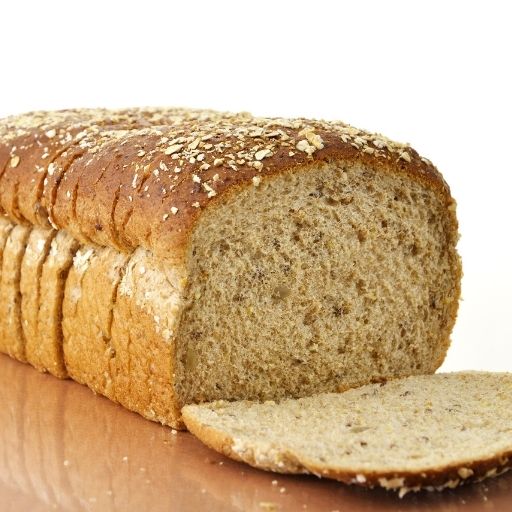
Barley bread was a staple in ancient Greece and Rome, made from ground barley grains. It has a hearty, nutty flavor and is typically baked in cool months. High in soluble fiber, it helps lower cholesterol and supports digestion. Often enjoyed with soups and stews. (Hordeum vulgare product)
78. Bao Bun
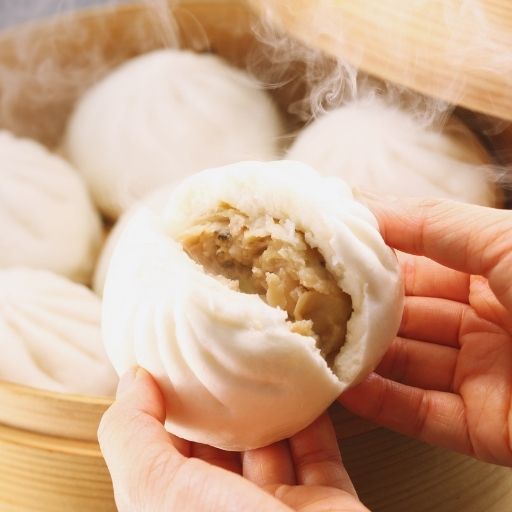
Bao buns originate from China and are soft, steamed buns with a fluffy texture and slightly sweet taste. Enjoyed year-round, they’re low in fat and a good source of carbohydrates. Commonly filled with pork, chicken, or vegetables. (Triticum aestivum product)
79. Bulgur Pilaf
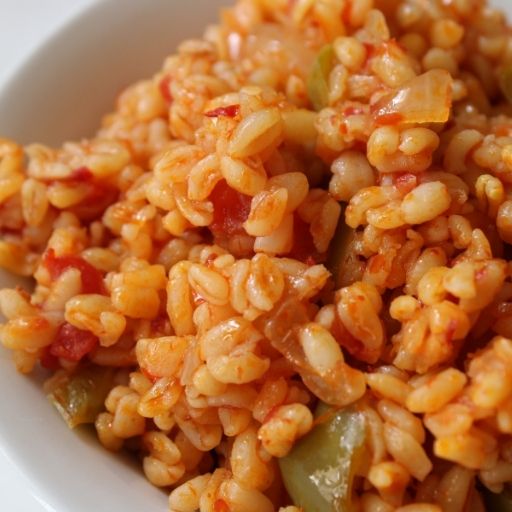
Bulgur pilaf is a Middle Eastern dish made from cracked wheat sautéed with onions, tomatoes, and spices. It has a nutty, savory flavor and is typically enjoyed in cooler months. Packed with fiber and iron, it supports digestion and energy. Served as a side or vegetarian main. (Triticum durum product)
80. Buckwheat Noodles
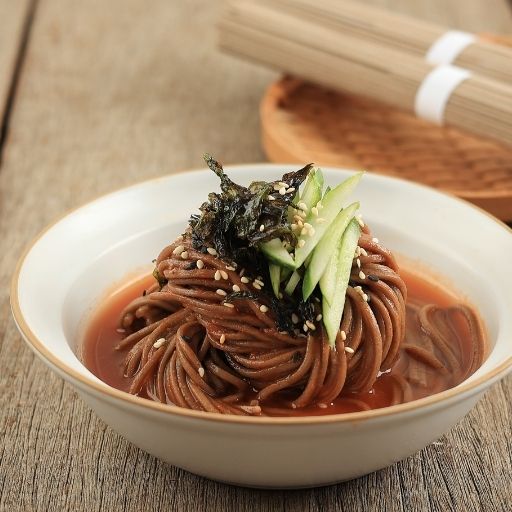
Also known as soba, buckwheat noodles hail from Japan and have a nutty, earthy taste. Usually served cold in summer or hot in soups during winter. Gluten-free and rich in protein, they help manage blood sugar and improve circulation. Popular in Japanese cuisine with soy-based sauces. (Fagopyrum esculentum product)
CONDIMENTS & SAUCES
81. Barbecue Sauce
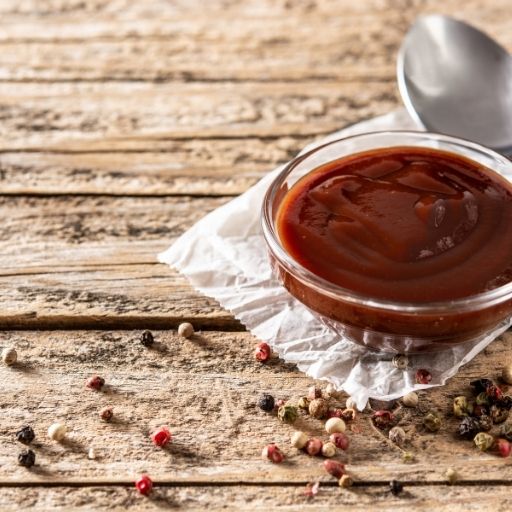
Barbecue sauce originated in the southern United States and combines sweet, smoky, and tangy flavors. It’s enjoyed year-round, especially during summer grilling season. Made with tomatoes, vinegar, and spices, it contains antioxidants like lycopene that support heart health. Commonly brushed over grilled meats, burgers, and ribs. (Condiment derived from Solanum lycopersicum and vinegar)
82. Béarnaise Sauce
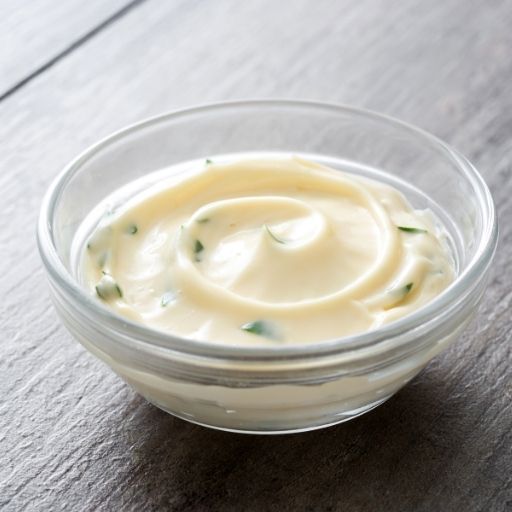
Béarnaise sauce comes from France and is a rich, buttery emulsion flavored with tarragon and shallots. It has a creamy texture and tangy herb flavor, best served fresh. Typically prepared during festive meals, it’s a good source of fats that enhance nutrient absorption. Served with steak, fish, or vegetables. (Sauce derived from butter and egg yolk emulsion)
83. Béchamel Sauce
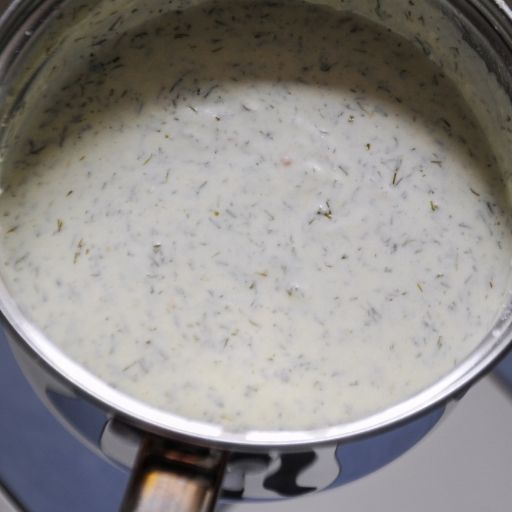
Béchamel sauce, one of France’s “mother sauces,” is made from milk, butter, and flour. It has a smooth, velvety texture and mild creamy taste. Made year-round, it’s rich in calcium and protein. Used as a base for lasagna, casseroles, and gratins. (Sauce derived from dairy and wheat flour)
84. Brown Sauce

Brown sauce, popular in the United Kingdom, features a tangy-sweet flavor from tomatoes, molasses, and vinegar. It’s enjoyed all year, especially at breakfast tables. Containing potassium and trace antioxidants, it adds zest without being heavy. Served with sausages, fries, or sandwiches. (Condiment derived from tomato and vinegar base)
85. Basil Pesto
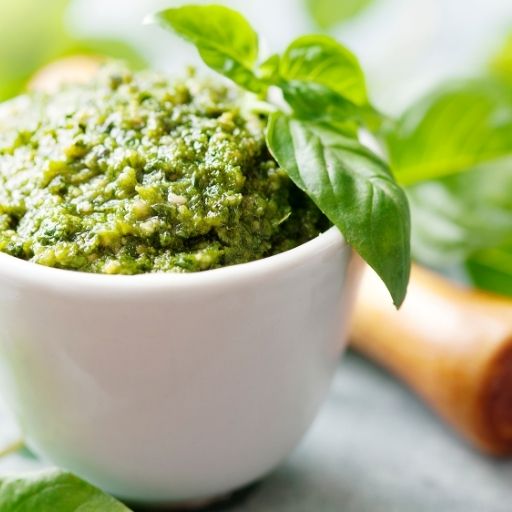
Basil pesto hails from Genoa, Italy, blending basil, garlic, pine nuts, olive oil, and cheese. It tastes bright, nutty, and aromatic. Best made in summer when basil peaks, it’s rich in healthy fats and antioxidants that support heart health. Commonly tossed with pasta or spread on bread. (Sauce derived from Ocimum basilicum leaves)
86. Blue Cheese Dressing
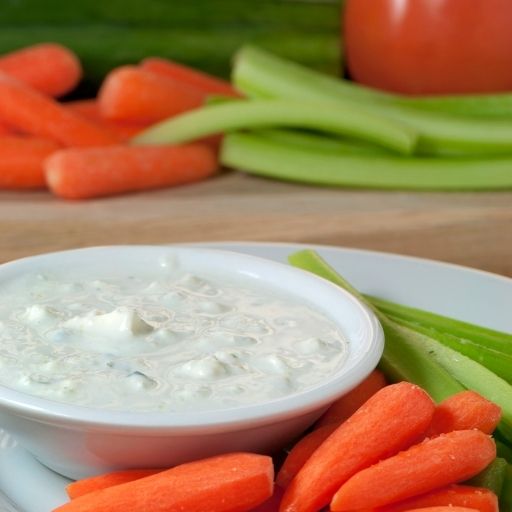
Blue cheese dressing originated in the U.S. and combines crumbled blue cheese with mayonnaise or yogurt. It has a tangy, creamy flavor and is made year-round. Rich in calcium and probiotics, it supports bone and gut health. Perfect for salads, wings, and vegetable dips. (Dressing derived from Penicillium roqueforti cheese)
87. Buffalo Sauce
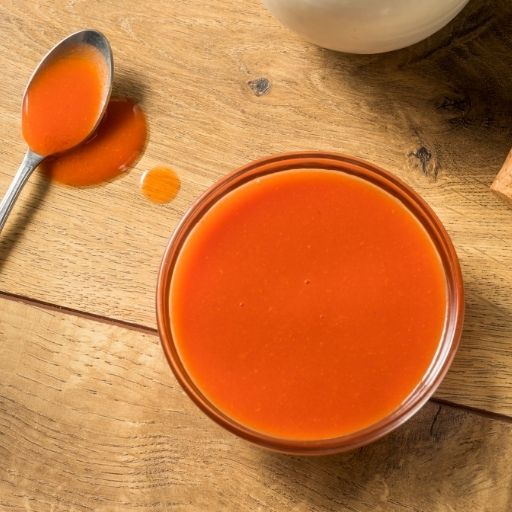
Buffalo sauce was created in Buffalo, New York, by mixing hot sauce with butter. It has a fiery, tangy, and buttery flavor. Usually enjoyed in fall and winter, it contains capsaicin that boosts metabolism. Commonly paired with chicken wings, fries, or sandwiches. (Condiment derived from Capsicum frutescens and butter)
88. Balsamic Vinegar
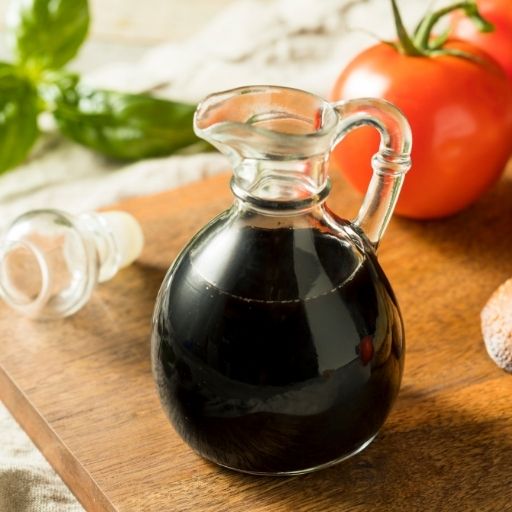
Balsamic vinegar originated in Modena, Italy, and has a sweet, tart, and complex flavor profile. Aged for years, it’s produced year-round. Rich in polyphenols, it supports blood sugar balance and digestion. Used in dressings, marinades, and glazes for meats or fruits. (Vinegar derived from Vitis vinifera grapes)
89. Black Bean Sauce
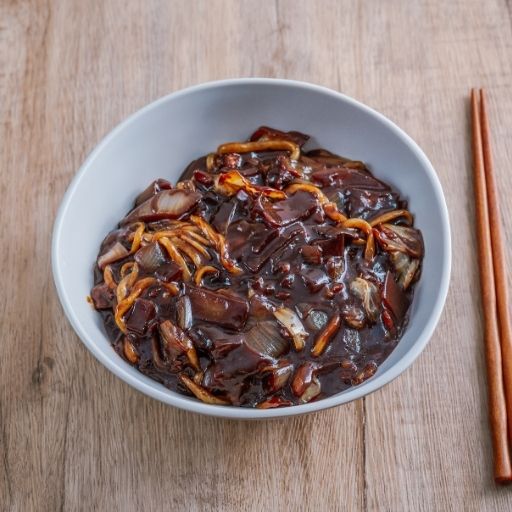
Black bean sauce comes from Chinese cuisine, made from fermented black soybeans. It has a savory, salty, and umami-rich taste. Typically produced year-round, it’s rich in protein and probiotics that aid digestion. Used in stir-fries, noodles, and steamed dishes. (Sauce derived from Glycine max)
90. Banana Ketchup

Banana ketchup was invented in the Philippines during World War II as a tomato substitute. It tastes sweet and tangy with a hint of spice. Available year-round, it’s high in potassium and vitamins A and C. Popular on fried foods, meats, and even pasta. (Condiment derived from Musa acuminata and vinegar)
SNACKS & SWEETS
91. Brownie

Brownies originated in the United States in the late 19th century and are known for their fudgy, chocolatey richness. Their dense, moist texture and deep cocoa flavor make them an all-season favorite. Packed with quick-release energy from sugar and carbs, they’re an indulgent treat. Brownies are commonly baked with nuts, fudge swirls, or caramel toppings. (Dessert derived from Theobroma cacao and Triticum aestivum)
92. Baklava

Baklava, a Middle Eastern and Mediterranean dessert, is made with layers of phyllo pastry, nuts, butter, and honey syrup. It has a crisp, flaky texture with a sweet, nutty taste. Usually prepared for festive occasions, it provides energy and heart-healthy fats from nuts. Popular in Turkish, Greek, and Arabic cuisines. (Pastry derived from Triticum aestivum and honey)
93. Biscotti

Biscotti, originally from Italy’s Tuscany region, are twice-baked cookies with a crunchy, nutty texture. They have a mildly sweet flavor and pair perfectly with coffee or wine. Made year-round, they’re lower in fat and high in protein when almonds are added. A classic snack for dipping and gifting. (Biscuit derived from Triticum aestivum and Prunus dulcis)
94. Butter Cookie

Butter cookies, originating from Denmark, are crisp and tender with a rich buttery flavor. Enjoyed especially during holidays, they’re made year-round and stored well. High in carbohydrates and fat, they provide quick energy. Often shaped into rings or stars and decorated with sugar. (Cookie derived from Triticum aestivum and Bos taurus butter)
95. Banana Bread
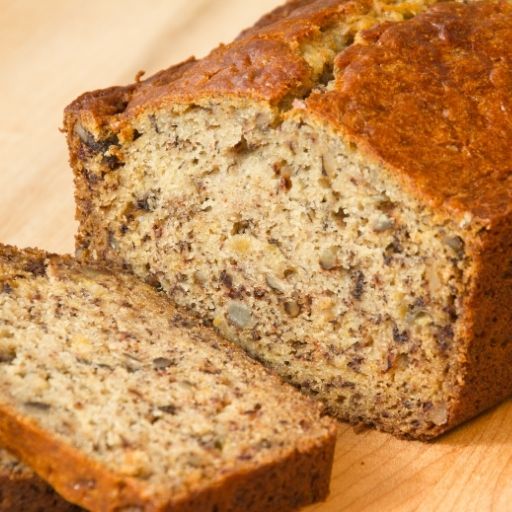
Banana bread became popular in the U.S. during the 1930s as a way to use overripe bananas. It has a moist, sweet taste with hints of caramelized fruit. Baked year-round, it’s a good source of potassium and fiber. Commonly enjoyed for breakfast or as a snack with nuts or chocolate chips. (Bread derived from Musa acuminata and Triticum aestivum)
96. Blondie
Blondies, often called “vanilla brownies,” originated in the U.S. and feature a rich, caramel-like flavor from brown sugar. Soft and chewy, they’re baked year-round. Providing quick energy, they’re a lighter alternative to chocolate brownies. Often baked with nuts or white chocolate chips. (Dessert derived from Saccharum officinarum and Triticum aestivum)
97. Bubble Gum

Bubble gum was invented in Philadelphia in 1928 and is famous for its sweet, fruity flavor and chewy texture. Enjoyed worldwide year-round, it’s primarily for fun rather than nutrition but helps freshen breath. Popular in candies, gumballs, and nostalgic treats. (Confection derived from natural latex and sugar syrup)
98. Bread Pudding

Bread pudding originated in medieval England as a way to use leftover bread. It has a custardy texture with a sweet, spiced flavor. Typically enjoyed in cooler months, it provides warmth and comfort with its mix of milk, eggs, and sugar. Commonly served with caramel or rum sauce. (Dessert derived from Triticum aestivum and Bos taurus milk)
99. Butterscotch

Butterscotch hails from Yorkshire, England, and is made by heating brown sugar and butter until caramelized. It has a rich, buttery-sweet taste. Made year-round, it provides a quick energy boost and a nostalgic sweetness. Found in candies, sauces, and puddings. (Confection derived from Saccharum officinarum and Bos taurus butter)
100. Blueberry Muffin

The blueberry muffin, an American breakfast favorite, blends tangy blueberries into a soft, sweet crumb. Best in summer when berries peak, it’s rich in antioxidants and vitamin C. A comforting, energy-boosting snack served warm with butter or coffee. (Baked good derived from Vaccinium corymbosum and Triticum aestivum)
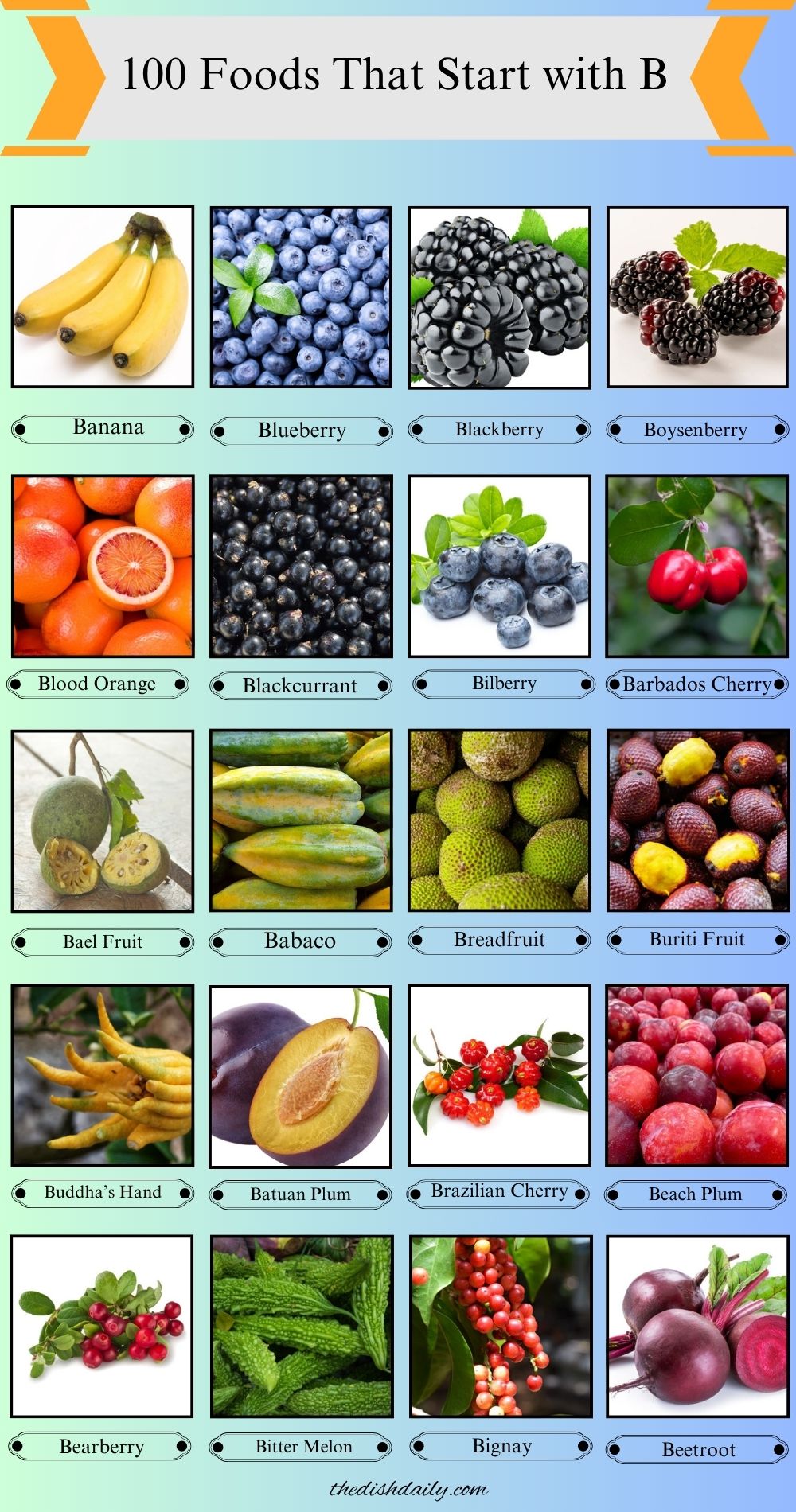
Leave a Reply